
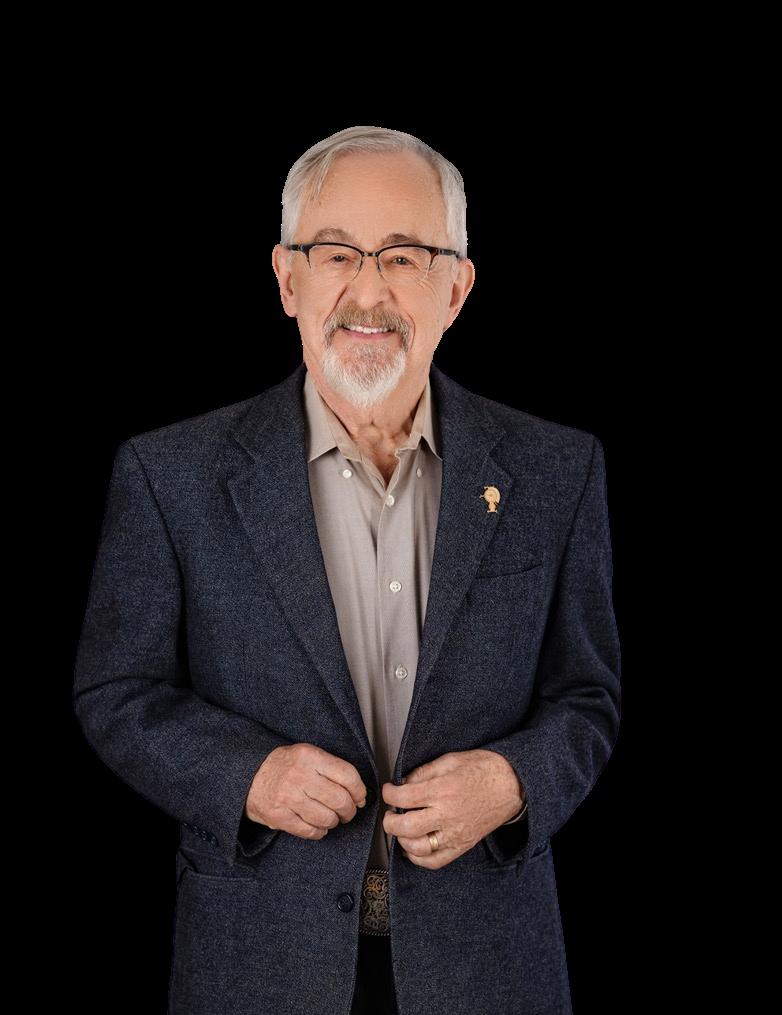
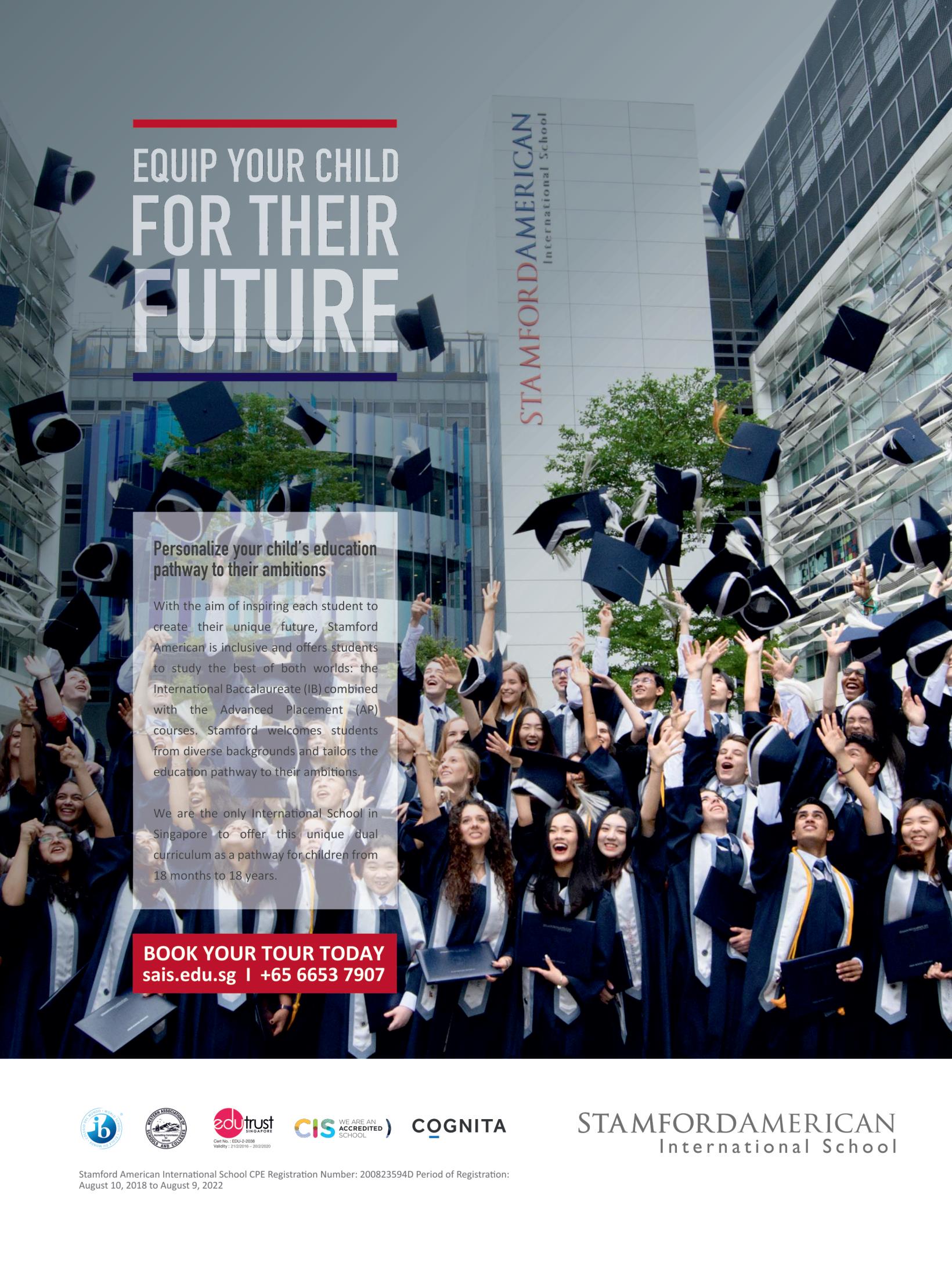
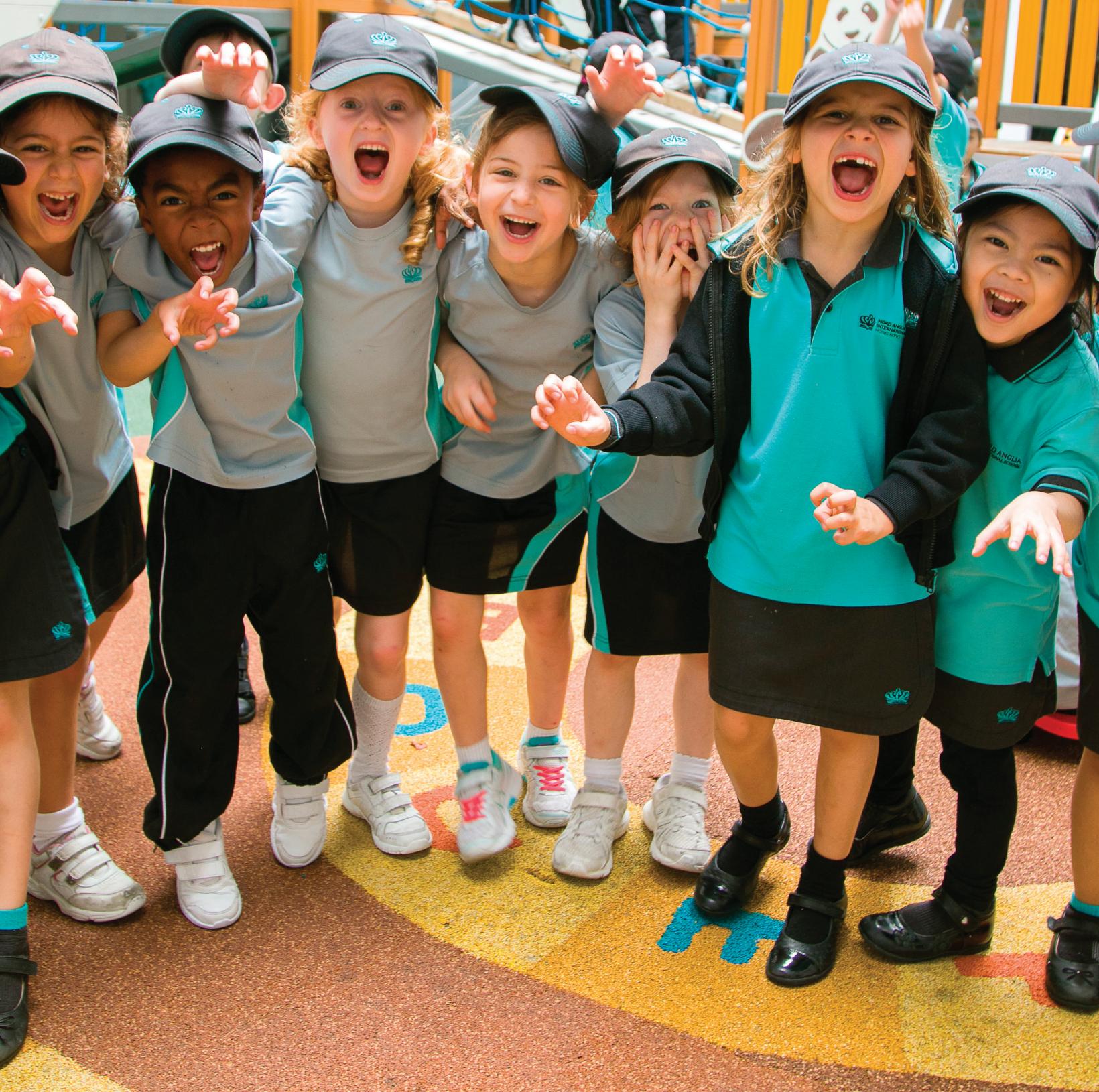











Inaworldwhereinnovationandadaptabilityareredefiningthefutureoflearning,fewnamesstandout
asboldlyasRichardLarson.Itisbothanhonourandaprivilegetopresentthiseditionspotlightinga pioneerwhosevisioncontinuestoshapemoderneducationacrossgenerationsandborders.
RichardLarson’sjourneyisnotsimplyoneofacademicachievement;itisastoryofrelentlesscuriosity, pioneeringresearch,andapassionforempoweringmindsthroughknowledge.Fromhisgroundbreaking workine-learningsystemstohisunwaveringadvocacyforequitableaccesstoeducation,Larsonhas continuallychallengedthenorms,turningideasintoimpactfulsolutions.Hiscontributionshaveextended farbeyondtheclassroom—intoglobaleducationpolicies,technologicaltransformation,andstudentcentredlearningmodelsthataresettingnewbenchmarks.
ThisInsightsSuccesseditionexploresthemanydimensionsofRichardLarsonnotjustasathought leader,butasamentor,innovator,andhumanitarian.Throughinsightfulfeatures,testimonials,andindepthanalyses,wedelveintohowoneman’scommitmenttoeducationhasinfluencedcountlessothersto thinkcritically,dreambigger,andleadresponsibly
IncelebratingRichardLarson,wealsocelebratethefutureofeducationonethatisinclusive,forwardthinking,anddeeplyhumanatitscore.
Wehopethiseditioninspireseducators,students,andpolicymakersaliketorecognizethelastingpowerof purpose-drivenleadershipineducation.
Happy Reading!


Modeling Data, Designing Cities, and Bridging Theory with Real Impact
A R T I C L E S
From Classroom to Culture
The Role of Influen�al Educators in Society
Unlocking the Poten�al of Modern Educa�on F e a t u r i n g
Transforming Pedagogy








Modeling Data, Designing Cities, and Bridging Theory with Real Impact
In an age where information is abundant and accessible
likeneverbefore,thereisagrowingparadox:whilewe know more, we often understand less. The rise of data hasnotautomaticallytranslatedintowiserdecisionsormore thoughtfulsolutions.Thegapbetweentheoryandreal-world application remains daunting, leaving classrooms full of passiveknowledge,butfewactionableinsights.Thisgrowing challengebegsthequestion:howdowetranslateknowledge intowisdom—andwisdomintoimpact?
For Richard Larson, the answer lies in applied curiosity A trailblazer in operations research, Larson has consistently defied the notion that academic inquiry should remain cloistered in journals or theoretical frameworks. Instead, he haschampionedanapproachrootedinpracticality,guidedby the principle that knowledge only finds meaning when it’s used to solve real-world problems—whether optimizing a city’s emergency response, reimagining education for the digital age, or building models that better represent the systemswenavigateeveryday
Throughdecadesofpioneeringwork,leadership,mentorship, andinnovation,RichardLarsonhasleftanindeliblemarkon thewayweunderstand,teach,andapplyknowledge.Hisstory is one of relentless exploration where science meets service,andwherenumbers,equations,andmodelstransform intotoolsthatshapebettersystems,smartercities,andmore resilientsocieties.

Richard Larson's academic journey began with a deep fascination for physics. As a high school student, he was drawn to its elegant simplicity—how a few principles could explain vast swaths of the universe. In contrast, he found chemistry less intuitive and biology overly dependent on memorization.That early love for clarity and structure soon evolvedintoapassionforoperationsresearch,adisciplinehe describesas“thephysicsoftheworldinwhichweoperate.”
To Larson, operations research offered the perfect bridge between scientific rigor and real-world problem solving. It enabled him to apply logical, quantitative methods to complex, everyday systems from traffic flows and emergencyservicestohealthcrisesandurbaninfrastructure. His attraction to this field wasn’t just intellectual—it was a calling to use mathematical thinking to improve life in tangibleways.
Throughouthiscareer,Larsonhasworkedattheintersection oftheoryandapplication.Hiscontributionstourbanservice systems especially emergency response and disaster planning—havemadehimarecognizedauthorityinthefield. His first major work, Urban Police Patrol Analysis (1972), revolutionized the way cities deploy police resources and earned him the prestigious Lanchester Prize. Later, he coauthored Urban Operations Research (1981),afoundational text that has influenced generations of scholars and practitioners.
Among his most notable innovations is the Hypercube QueueingModel,atoolusedtooptimizeresourceallocation in emergency response systems. His research on queuing theory—how people wait, why delays happen, and how systemscanbeimproved—hasmadeprofoundcontributions topublicservicesaroundtheglobe.
One of Larson’s most tangible impacts came in the form of transforming New York City’s 911 emergency response system. Before the implementation of 911, residents had to dial different numbers depending on their borough, creating chaosinmomentsthatdemandedclarityandspeed.Evenafter unifying the number, the system still suffered from serious inefficiencies.

Larson was invited to help overhaul the system. Working hand-in-handwithdispatchersandpolicelieutenants,heused data modeling to optimize operator schedules and reduce caller wait times. His work wasn’t about creating abstract efficiencies it was about saving lives. The resulting improvementssetaprecedentforcitiesacrosstheglobeand showcasedthepowerofappliedoperationsresearchinpublic service.
One of Larson’s defining characteristics is his refusal to be confined by disciplinary silos. He has collaborated across sectors and fields, applying his knowledge to healthcare planning,smartenergyhousing,logistics,workforcesystems, and pandemic modeling Whether it’s studying how to distribute vaccines efficiently or analyzing shifts in STEM education,Larson’sapproachisalwaysholistic,data-driven, andcenteredonproblem-solving.
His interdisciplinary mindset is exemplified by his wideranging publications—over 175 scientific articles and six books—andhispartnershipswithstudentsandprofessionals fromdiversebackgrounds.ForLarson,operationsresearchis notmerelyanacademicsubject;it’sauniversallanguagefor understandingandimprovingtheworld.
LarsonhasspentmuchofhiscareerguidingstudentsatMIT, not only as an educator but also as a mentor. His teaching philosophy balances rigor with empathy. He believes in encouraging students to take intellectual risks while also holdingthemtohighstandards.Hecreditshisownacademic development to mentors who were honest and demanding—qualities he has sought to emulate in his own mentorship.



Many of his most impactful papers were co-authored with students, including award-winning works like Modeling the Effects of H1N1 Influenza Vaccine Distribution and STEM Crisis or STEM Surplus? Yes and Yes. These collaborations underscore Larson’s commitment to fostering new talent whiletacklingsociety’smostpressingproblems.
At the heart of Larson’s philosophy is “model-based thinking” a structured way of approaching complex problemsbybuildingsimplified,data-drivenrepresentations ofreal-worldsystems.Hebelievesthatbyunderstandingthe dynamics behind how systems behave, we can make better decisions.
InhisbookModelThinkingforEverydayLife,Larsonaimsto bring this approach to a broader audience. He argues that model-based thinking isn’t just for academics or engineers it’s a life skill Whether navigating traffic, managing time, or assessing risk, everyone can benefit from learninghowtothinkinmodels.
While Larson is a proponent of digital tools, he is wary of relying too heavily on simulations and AI-driven models withoutfirsthandobservation.Hecoinedthephrase“Bootson the Ground” research to stress the importance of being directlyinvolvedinthesystemsoneisstudying.
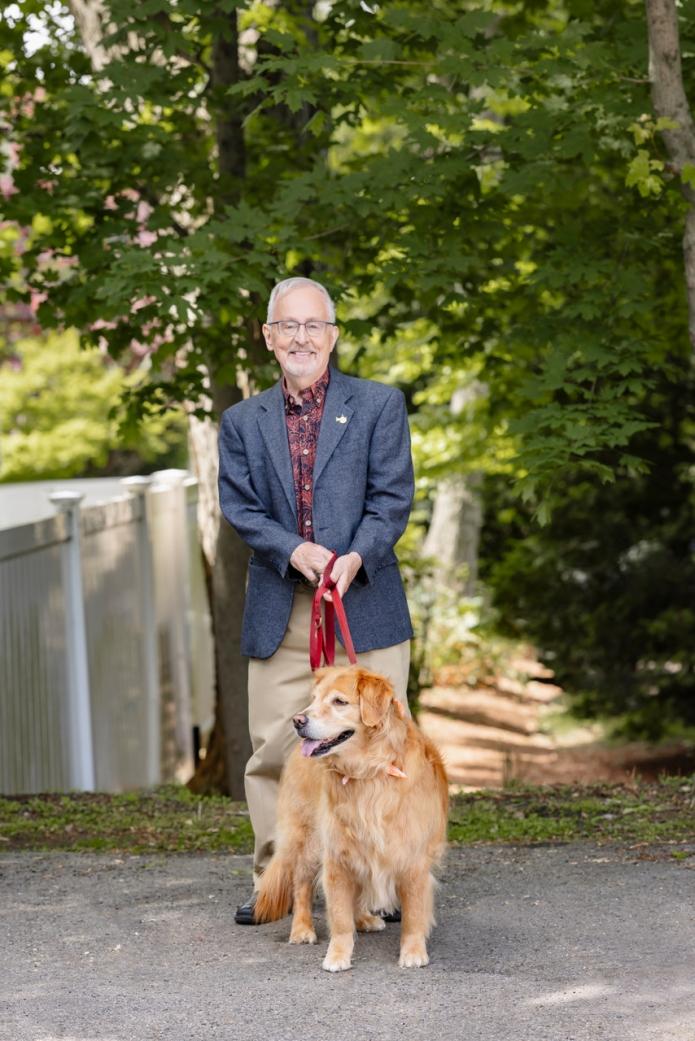

ForLarson,trueinsightcomesfrommarryingdatawithlived experience. He warns that researchers who remain isolated from the field risk building models that are elegant but ultimately irrelevant. Real-world observation, he argues, is essential for crafting solutions that reflect genuine human behaviorandpracticalchallenges.
As director of MIT’s Center for Advanced Educational Services, Larson led efforts to incorporate technology into learninglongbeforeitbecamemainstream.HefoundedLINC (Learning International Networks Consortium) to connect educators globally and promote accessible, high-quality education.
Currently, as the head of the MIT BLOSSOMS initiative, Larsoncontinuestoworkondemocratizingscienceandmath education. He sees technology not as a replacement for traditional education, but as a tool for inclusion—providing students worldwide with the same quality of content once reservedforeliteinstitutions.
Yet,heremainscautious.Hebelieveseducatorsmustensure thatAIandautomationdonoterodestudents'criticalthinking or self-confidence. Thoughtful design and ethical considerations, he argues, are key to ensuring that digital learningremainsempowering,notalienating.
Larson is candid about the evolving pressures in academia: limited research funding, rising expectations, and an intense push for publications. What has sustained him, he says, is MIT’scultureofopennessandinnovation.


He believes that universities must create supportive environments that encourage risk-taking and crossdisciplinary work if they want to foster true intellectual breakthroughs.
He acknowledges that institutional inertia can stifle collaboration, but he remains optimistic. With the right leadership and vision, academic institutions can continue to beenginesofsocietalchange.
Lookingbackonhisdecadesofwork,Larsonidentifiesthree principles that have guided him: authenticity, intellectual bravery,andmeaningfulrelationships.Heisproudestnotjust oftheawardsortitles,butofthetangiblechangehisworkhas broughttocommunitiesandthestudentshe’smentoredalong theway
Hefondlyrecallsco-developingthecourseUrbanOperations Research withProfessorAmedeoOdoni,acollaborationthat blendedteaching,writing,andhands-onproblem-solvinginto
a deeply fulfilling academic experience. Their resulting textbookremainsacornerstoneofthefield,widelycitedand taught.
Richard Larson’s work stands as a powerful reminder that data and models are only as meaningful as the human problems they aim to solve. In a world flooded with informationandautomatedsolutions,hiscareerisatestament totheenduringvalueofcuriosity,collaboration,andcontext.
Whether designing a 911 system, modeling a pandemic, or mentoringthenextgenerationofthinkers,Larsonbringsthe same ethos to every endeavor: that knowledge must serve. Andindoingso,heremindsusthatthebestmindsarethose thatnotonlyseektruth—butalsostrivetoimprovetheworld withit.
Withyoureverystageofhumanadvance,there hasbeenoneunchangingelement:the incredibleforceofgreatteachers.Fromsuch ancientsofphilosophytothededicatedteachersand professorsoftoday,greatteachershaveservedascatalysts ofindividualdevelopment,socialtransformation,and communityimprovement.Theircontributionextendsfar beyondtheclassroom—theysparkinquiry,kindle enthusiasm,andinflamegenerationstocreateanew tomorrow
Excellentteachersdomorethanteachlessonsorgive homework.Theyarerolemodels,guides,andlearning champions.Duringthetimesoffast-pacedtechnological evolutionandchangingsocialmores,excellentteachers equipstudentswiththeabilitytothinkcritically,be empathetic,andlearntobounceback.Theycreatespaces wheredifferentperspectivesareheardandvalued,andeach studentmatters.
Thestrengthofgreatteachersisthattheyrecognize potentialanddevelopit.Theyknowthateverylearneris specialwithvaryingstrengthsandweaknesses.Thegrowth mindsethelpsgreatteacherstomakelearnersacceptfailure asasteppingstonetoachievingmastery Thischanged mindsettriggersdominoeffectsforsocietyasawhole, turninglearnersintoactivecitizensandcreativeproblem solvers.
Acrosshistory,thegreatestteachershaveledsocialchange. Theyareadvocatesforequality,diversity,andaccessto


qualityeducationforeveryone.Inunderrepresented communities,greatteachersbecomeagentsofhope,closing opportunitygapsandchanginglives.Fromfightingfor underrepresentedpopulationstointroducingnewmodelsto servediverselearners,greatteachersleadoneclassroomat atime.
Inaddition,effectiveteachersguidestudentsthroughthe toughestoflife'schallenges.Inaworldthatappearstobe polarizingitselfbytheminute,theylearnrespectful dialogueandinquiringminds.Theyinstilltheirstudents withthecouragetoquery,thehumilitytohearotherpeople out,andtheintegritytoleadwithethics.Thesearethekinds ofsocietiescohesiveandcompassionatesocietiesneed.
Aseducationbecomesincreasinglydigitized,theworkof goodteacherscanneverbereplicated.Sure,technologycan deliverinformationwell,butitcannotsimulatethewarmth, theinstinct,andthehumantouchthatgoodteachers provide.Acomforttalk,asubtlepush,oranexhortationto studyharder–thesesmallgesturesbeingdoneoutof concernmakelastingimpressionsandinstilltrust.
Influentialteachersalsohavetheheavyburdenofassisting studentsindevelopingdigitalliteracyandactingonthe ethicalaspectsoftheonlineenvironment.Theyteach studentstonavigatewiththestrengthsoftechnology withouteliminatingtheneedforauthentichuman interaction,sotheycanflourishinanintricateglobal culture.
Understandingtheirreplaceableworthofsuchinfluential teachersisaninvestmentintheirhappinessand development.Policymakersandcommunitiesare responsibleforofferingsuchinfluentialteachersthe training,supportsystems,andresourcesthatmaketheir successpossible.Influentialteachers,inturn,raisewhole generations,drivinginnovationandprosperity.
Communitiesandfamiliesalsohaveanimportantroleto playbycollaboratingwithrobustteacherstosupporthome andneighborhoodlearning.Parents,caregivers,and teachers,whentheyworktogether,providestudentswitha consistentsourceofsupportandencouragement,which addstotheenablinginfluenceofrobustteachers.
Goodteachersdon'tmeasuresuccessbyscoresalone;they seehowaonceshystudentgainsconfidenceandfindstheir voice,orhowayoungchildbecomesresoluteandhasthe couragetodreambigger Theytouchliveslongafter studentshaveleftschoolbehind,appearinginthetypical workplace,thefamilylivingroom,andcommunitycenters acrosstheglobe.
Inahungryworldforwisdom,compassion,and advancement,theworkofgreatteachershasneverbeen morevital.Theyteachusthateducationisnottransmission buthumancapacitybuildingandnurturingthevaluesthat benefitus.
Theroleofinfluentialeducatorsinsocietyisnothingshort oftransformative.Theyshapefutures,drivesocialprogress, andkeeptheflameofhopeburningbrightforgenerations tocome.Aswenavigateanuncertainworld,onetruth remainssteadfast—influentialeducatorsaretheguiding lightswhohelpusallfindourway





www.insightssuccessmagazine.com










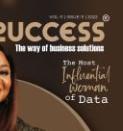



In an era defined by rapid technological advancements,
shifting societal needs, and a globalized economy, the educationsystemhasundergoneaprofoundtransformation. Traditionalmodelsoflearningarebeingreimagined,andmodern education is emerging as a dynamic, inclusive, and forwardthinking approach designed to prepare learners for the complexities of the 21st century More than just a buzzword, modern education holds the key to unlocking the potential of individualsandsocietiesalike.
One of the most striking features of modern education is its departure from the rigid, classroom-centric model of the past. While schools and universities remain crucial, learning is no longer confined to four walls and a chalkboard. With the rise of online platforms, hybrid learning models, and mobile technologies,educationhasbecomemoreaccessibleandflexible thaneverbefore.
This shift allows students to learn at their own pace, explore diversesubjectsbeyondstandardcurricula,anddeveloppractical skills in real-time.Whether it's coding, entrepreneurship, digital marketing,orclimatescience,learnersnowhavetheautonomyto tailor their educational journeys to fit their passions and career aspirations.
Traditional education often prioritized memorization and standardized testing Modern education, however, places a premium on critical thinking, problem-solving, and creativity Today’slearnersarenotjustexpectedtoabsorbinformation;they are encouraged to question it, analyze it, and use it to generate innovativesolutions.
This approach is essential in a world where automation and artificialintelligencearerapidlytransformingthejobmarket.The ability to think critically, adapt to change, and collaborate with others is becoming more valuable than ever—skills that modern educationactivelyfosters.
Oneofthegreateststrengthsofmoderneducationliesinitsability topersonalizelearningexperiences.Everystudentisunique,with
distinctstrengths,weaknesses,andlearningstyles.Advances ineducationaltechnologyanddataanalyticsenableeducators to identify these differences and adjust teaching methods accordingly.
Adaptive learning platforms, interactive digital content, and AI-driven feedback systems make it possible to customize lessons to fit individual needs. This ensures that students remainengaged,motivated,andultimatelymoresuccessfulin theiracademicandpersonalpursuits.
In addition to academic knowledge, modern education recognizes the importance of emotional intelligence, resilience, and interpersonal skills. These so-called "soft skills" are increasingly vital in a globalized, team-oriented workplace.
Moderncurriculaoftenincorporatesocial-emotionallearning (SEL), mindfulness practices, and collaborative projects to helpstudentsbuildempathy,communicationskills,andselfawareness The goal is not just to produce intelligent graduates, but emotionally intelligent citizens who can navigate the complexities of human relationships and contributemeaningfullytosociety.
Modern education also champions diversity and inclusivity, ensuring that learners from all backgrounds have equal opportunities to succeed. Educational content is becoming more culturally responsive, representing a broader spectrum of voices and experiences. Additionally, institutions are increasingly focused on supporting marginalized communities through scholarships, mentorship, and accessiblelearningtools.
Inclusive education enriches the learning environment for everyone,fosteringadeeperunderstandingoftheworldand cultivatingcompassionandrespectacrossdifferences.
Inthetraditionalmodel,teachersweretheprimarysourceof knowledge, delivering information in a one-way manner In modern education, their role has evolved into that of a facilitator or guide. Rather than simply instructing, teachers nowinspire,mentor,andsupportstudentsastheytakecharge oftheirownlearningjourneys.
This shift is empowering for both educators and learners. Teachers gain more creative freedom to innovate in their methods, while students develop independence and confidenceintheirabilitytolearnandgrow.
In today’s world, education doesn’t end with a diploma. Moderneducationpromotestheconceptoflifelonglearning, encouragingindividualstocontinueacquiringnewskillsand knowledge throughout their lives. Whether through online courses, workshops, or self-directed learning, there are countlesswaystostayintellectuallyactiveandprofessionally competitive.
Lifelonglearningisessentialinafast-changingworldwhere industriesevolve,andnewcareersemergeatarapidpace.It not only enhances employability but also nurtures curiosity, personalfulfillment,andadaptability.
Whilethebenefitsofmoderneducationareundeniable,there are still challenges to overcome The digital divide, inconsistent access to technology, and the need for educator trainingremainsignificantbarriersinmanypartsoftheworld. Moreover,thepressuretoconstantlyinnovatecansometimes leadtoburnoutorsuperficialchangesthatlackrealimpact.
However, these challenges are not insurmountable. With ongoinginvestment,collaborationbetweengovernmentsand private sectors, and a commitment to inclusivity, modern education has the potential to become a powerful force for socialandeconomicprogressworldwide.
As we navigate a rapidly evolving world, modern education stands as a beacon of hope and transformation. It empowers individualswiththeknowledge,skills,andmindsetneededto thrive in uncertain times. By embracing innovation, personalization, and inclusivity, modern education redefines whatitmeanstolearnandsucceed.
Unlocking its full potential requires a collective effort from educatorsandstudentstopolicymakersandcommunities.But therewardisafuturewhereeducationisnotaprivilegeforthe few,butatransformativejourneyaccessibletoall.











